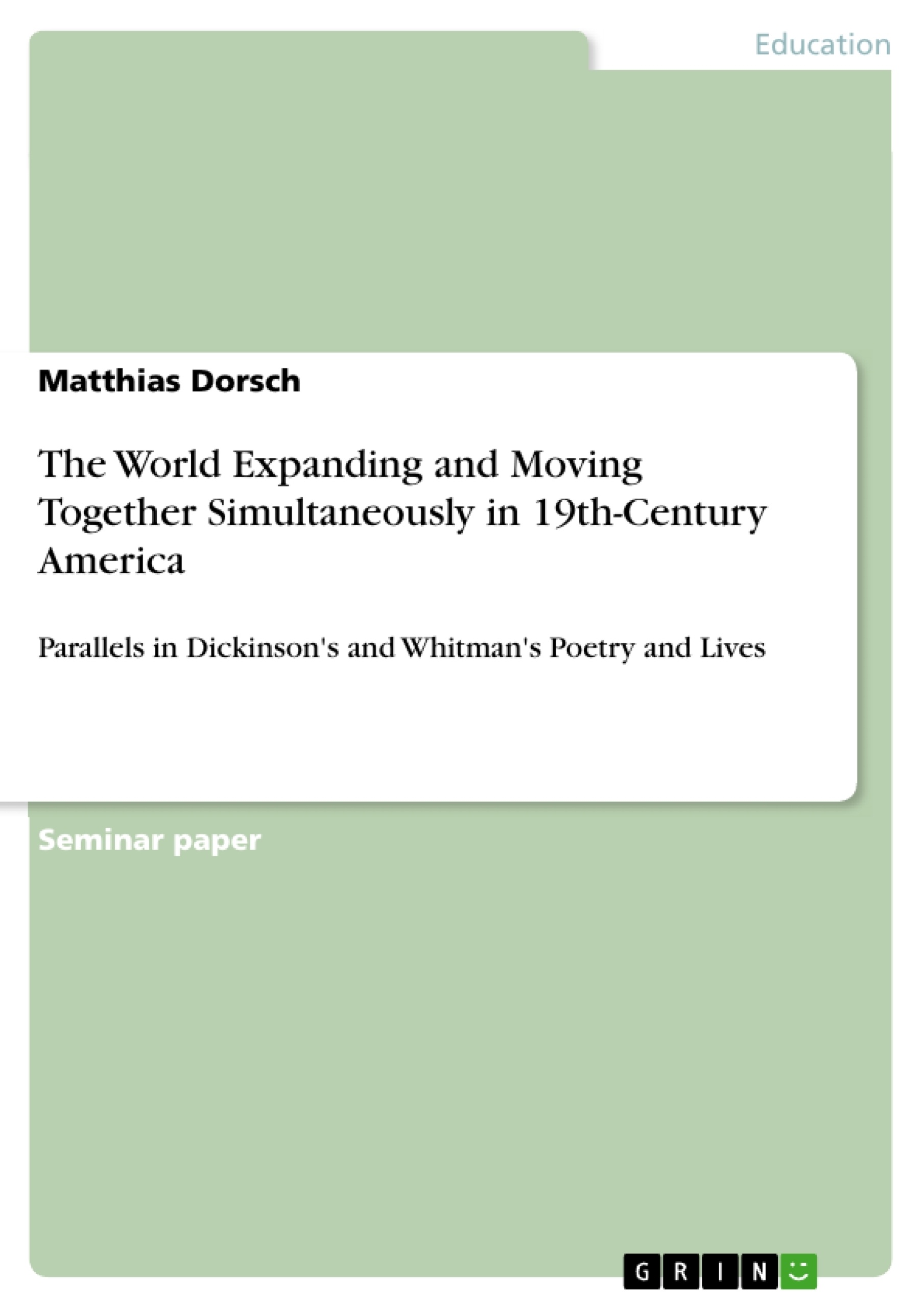Die Welt im Neunzehnten Jahrhundert befindet sich im Wandel - vor allem auf dem amerikanischen Kontinent. Die Erschließung neuer Gefilde durch Siedler lässt die Welt größer werden, während die Industrialisierung, ein expandierendes Wissen der Menschheit sowie vor allem neue Methoden der Kommunikation ein symbolisches Zusammenrücken der Welt bewirken.
Es ist die Zeit von Emily Dickinson und Walt Whitman - zwei amerikanischen Dichtern wie sie auf den ersten Blick nicht unterschiedlicher sein könnten. Doch es eint sie nicht nur, dass beide als typische amerikanische Poeten des neunzehnten Jahrhunderts bezeichnet werden können. Diese literarische Analyse im Kontext der sich wandelnden Räumlichkeit der Welt zeigt, dass sowohl bei Dickinson als auch bei Whitman das Nahe und das Ferne eine große Rolle spielen - und zwar nicht nur in den Gedichten, sondern auch in den konträren Lebenswegen der beiden Dichter. Ein vergleichender Blick auf die Wahrnehmung von Räumlichkeit in der Dichtung der "alten Welt" rundet die Analyse ab.
Inhaltsverzeichnis (Table of Contents)
- Introduction
- Discovering the „New World“ in the 19th century – “getting bigger”
- Walt Whitman's participation in discovering the world
- Territorial expansion in Whitman's poetry
- The world \"getting smaller\" by communication and transportation
- Spatiality in Emily Dickinson's life
- Dickinson's poetry as poetry of the small world
- Perception of the American spatiality in German poetry
- Conclusion
Zielsetzung und Themenschwerpunkte (Objectives and Key Themes)
This thesis aims to explore the contrasting yet simultaneous developments of "getting bigger" and "getting smaller" in 19th-century America, analyzing their sources and their manifestations in the poetry of Emily Dickinson and Walt Whitman. It will investigate the historical context of these spatial developments and establish personal connections of the poets to these movements, ultimately examining how these concepts are reflected in their respective works.
- The concept of "getting bigger" and "getting smaller" in 19th-century America
- The influence of industrialization and technological advancements on spatiality
- The impact of territorial expansion on American culture and identity
- The role of communication and transportation in creating a sense of global interconnectedness
- The differing perspectives of Emily Dickinson and Walt Whitman on American spatiality
Zusammenfassung der Kapitel (Chapter Summaries)
The introduction provides a brief overview of the thesis' main objectives and the dual movements of "getting bigger" and "getting smaller" in 19th-century America. This sets the stage for an analysis of the historical context and the individual experiences of Emily Dickinson and Walt Whitman in relation to these spatial developments. Chapter 2 delves into the historical context of "getting bigger" through the exploration of the "New World," examining the expansion of American territory through westward movement and political maneuvers. Chapter 3 and Chapter 4 explore Walt Whitman's engagement with the concept of discovery and the impact of territorial expansion on his poetry. Chapter 5 shifts the focus to the "getting smaller" concept, analyzing the role of communication and transportation in connecting the world. Chapter 6 and Chapter 7 will investigate Emily Dickinson's life and her poetic exploration of the small world, contrasting her perspective with Whitman's broader vision. Finally, Chapter 8 will examine the German perception of American spatial development through the lens of German poetry, providing an outside perspective on the subject.
Schlüsselwörter (Keywords)
Key concepts addressed in this thesis include territorial expansion, 19th-century America, communication and transportation, "getting bigger" and "getting smaller", Emily Dickinson, Walt Whitman, spatial development, and American identity. The analysis will also consider the relationship between poetry and historical events, exploring how these artistic expressions reflect broader social and cultural changes.
- Quote paper
- Matthias Dorsch (Author), 2010, The World Expanding and Moving Together Simultaneously in 19th-Century America, Munich, GRIN Verlag, https://www.grin.com/document/181748



